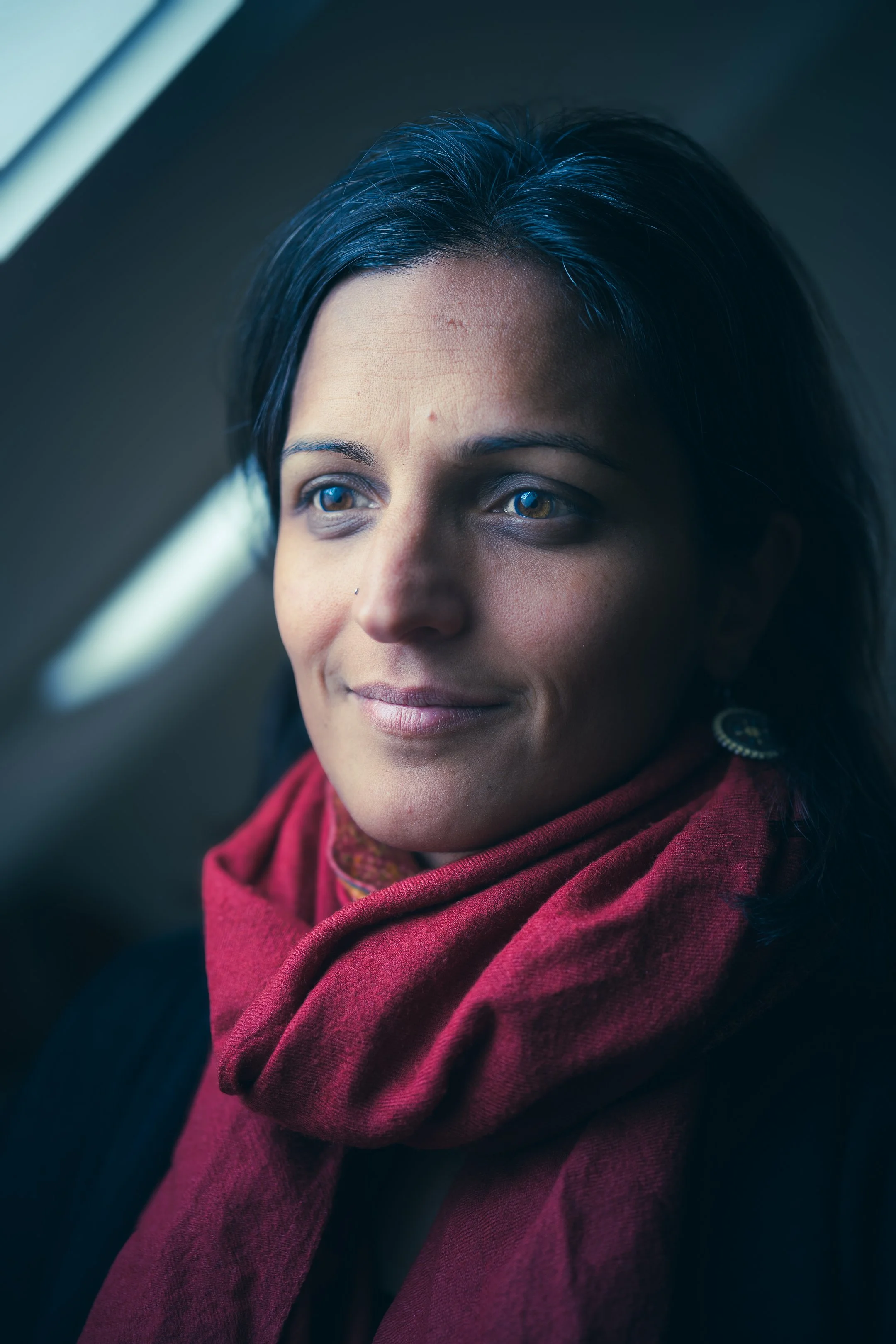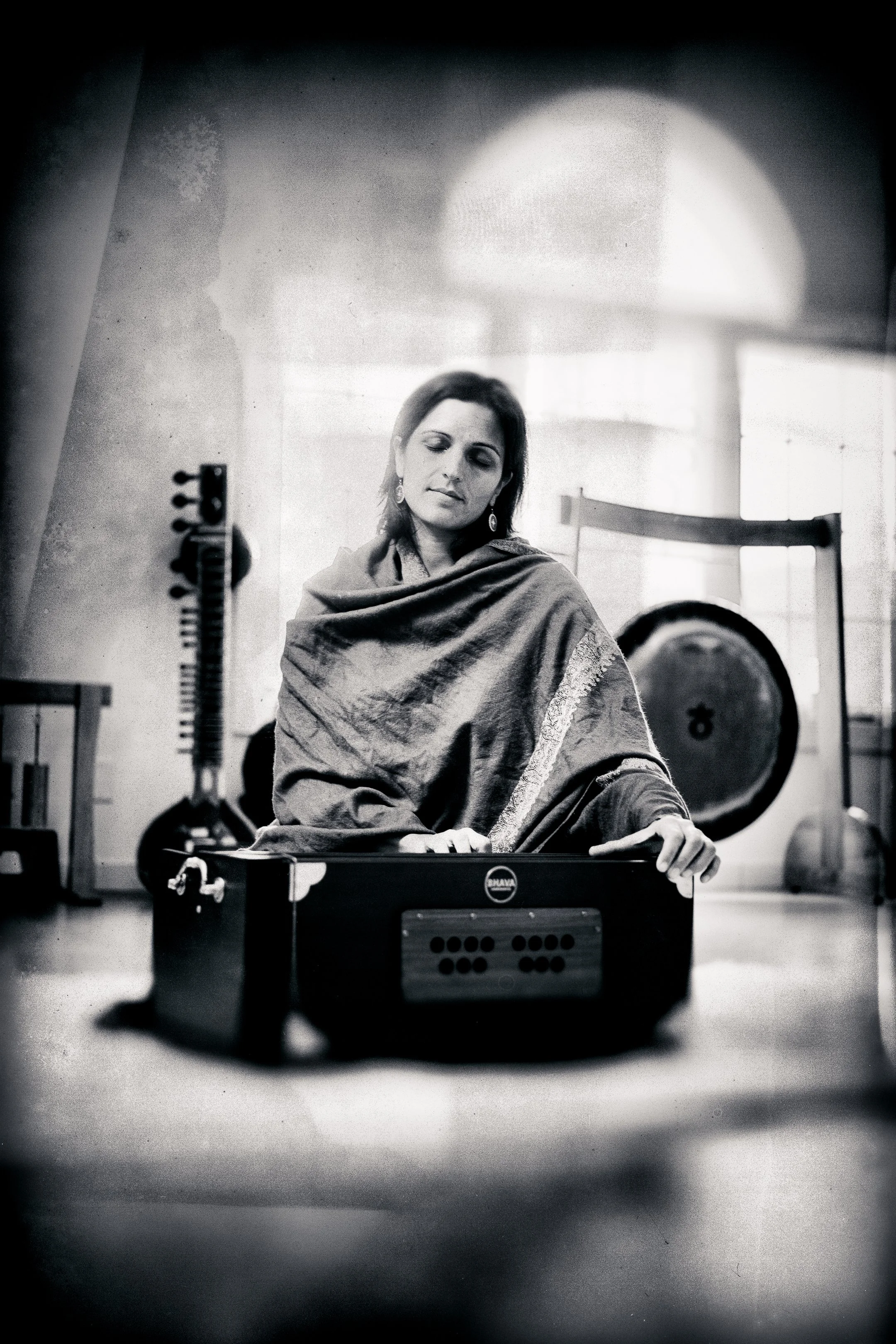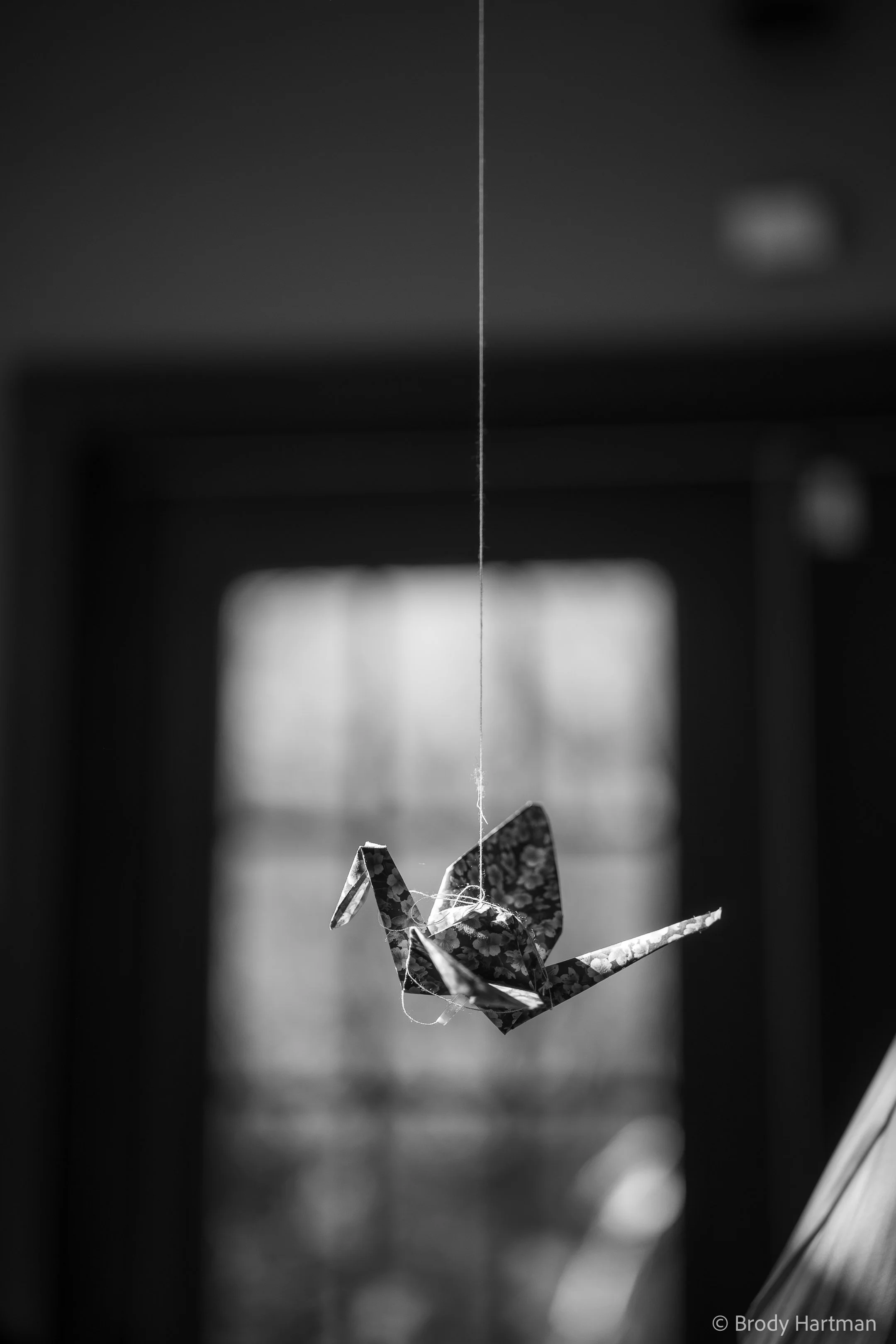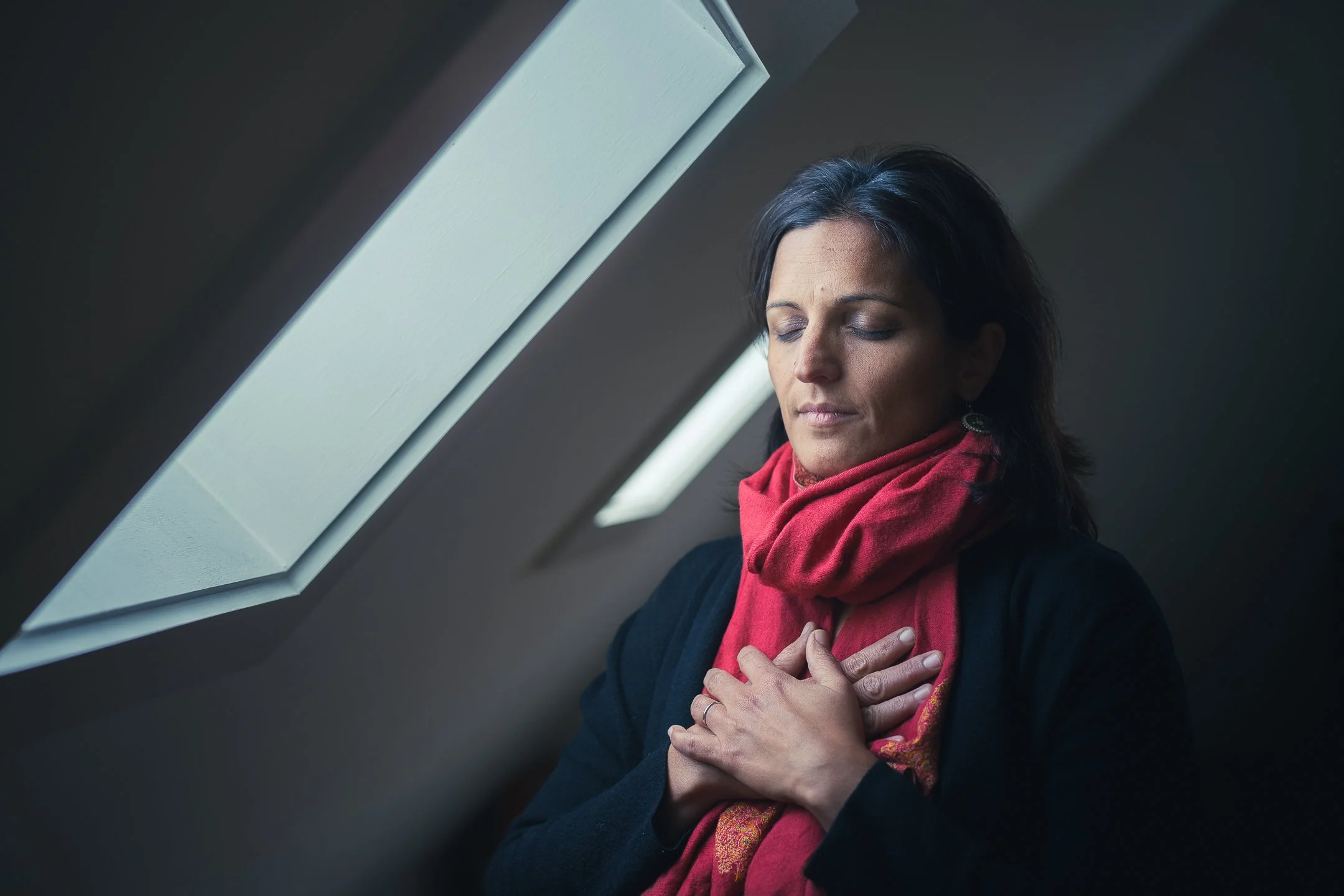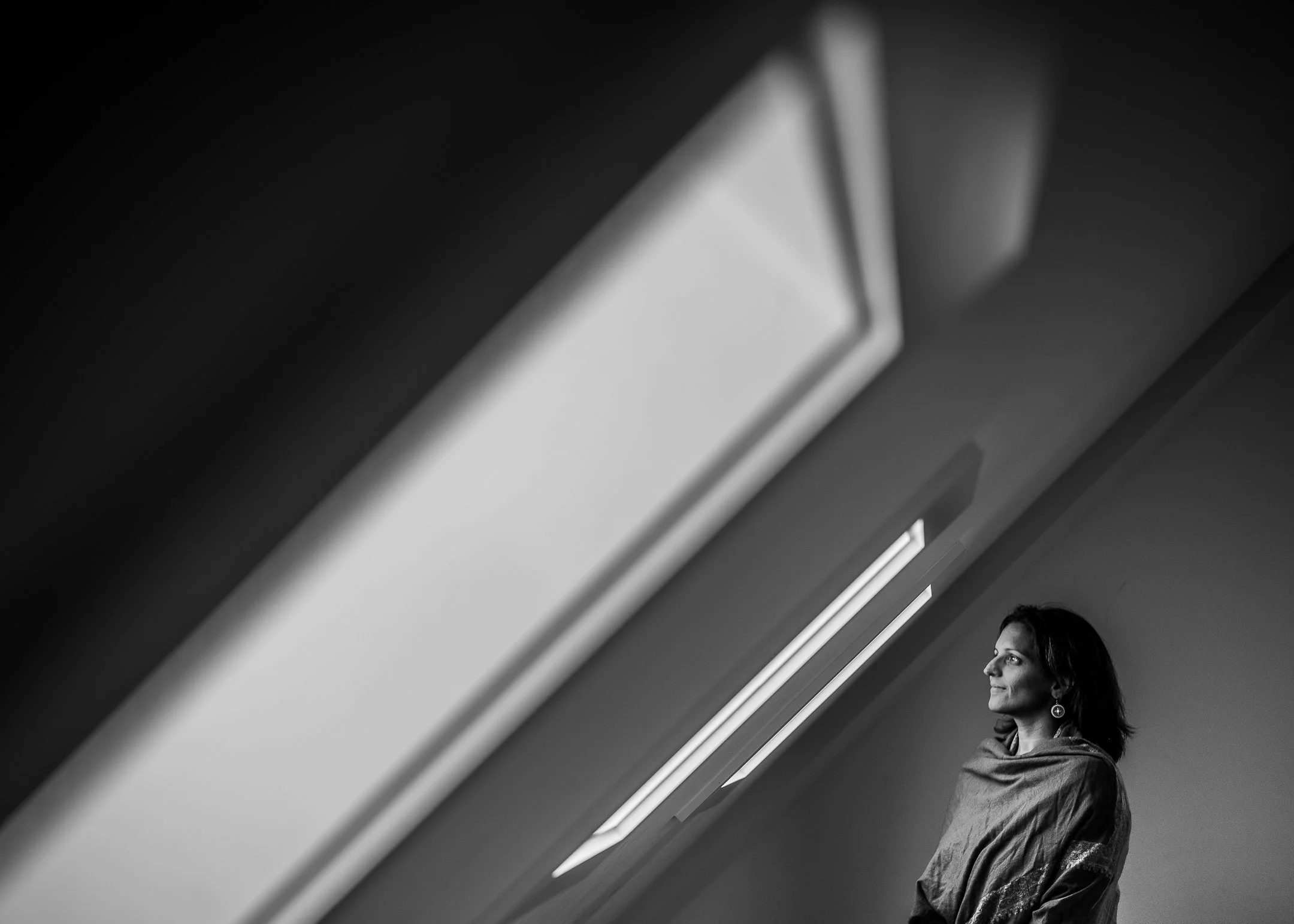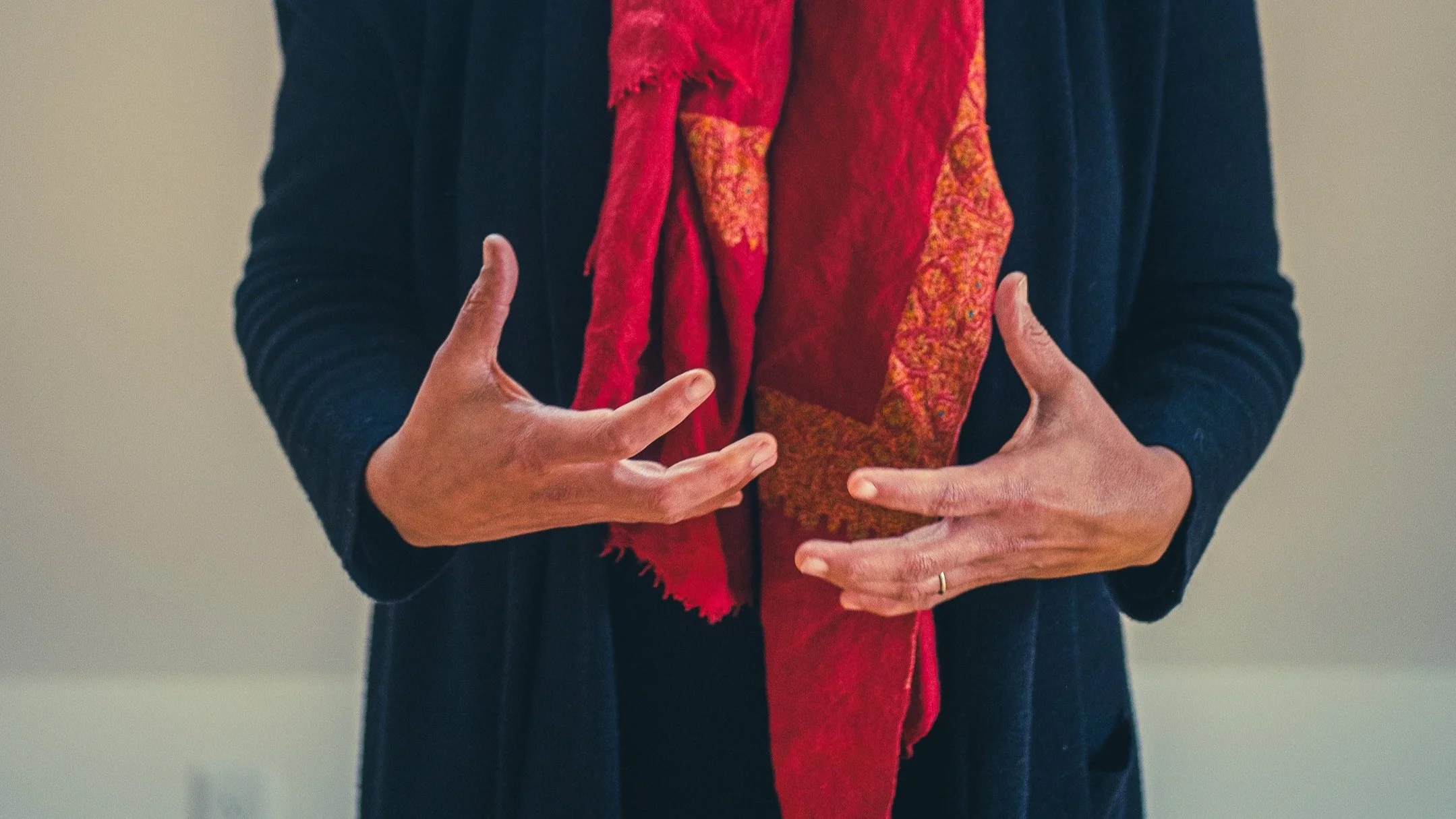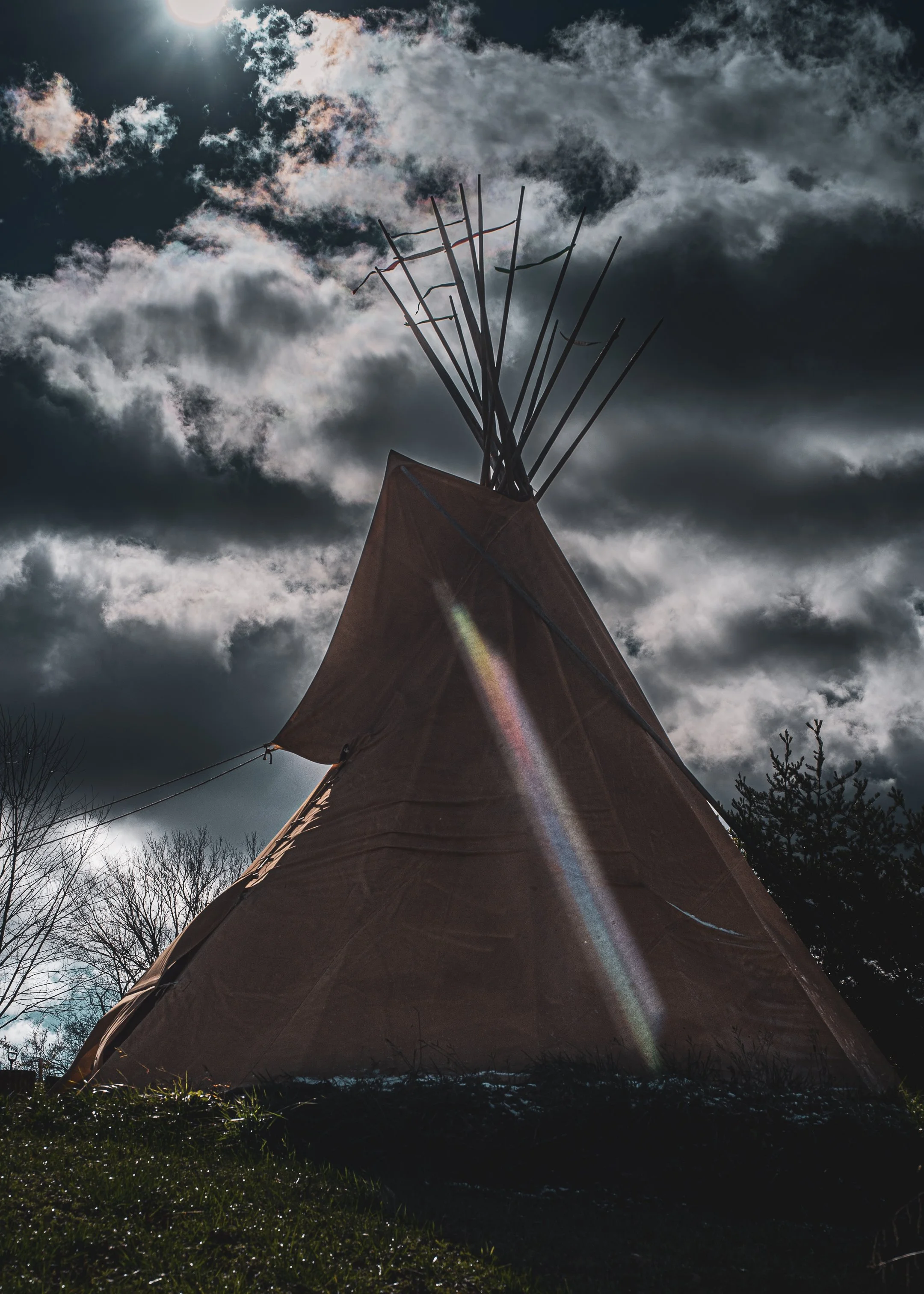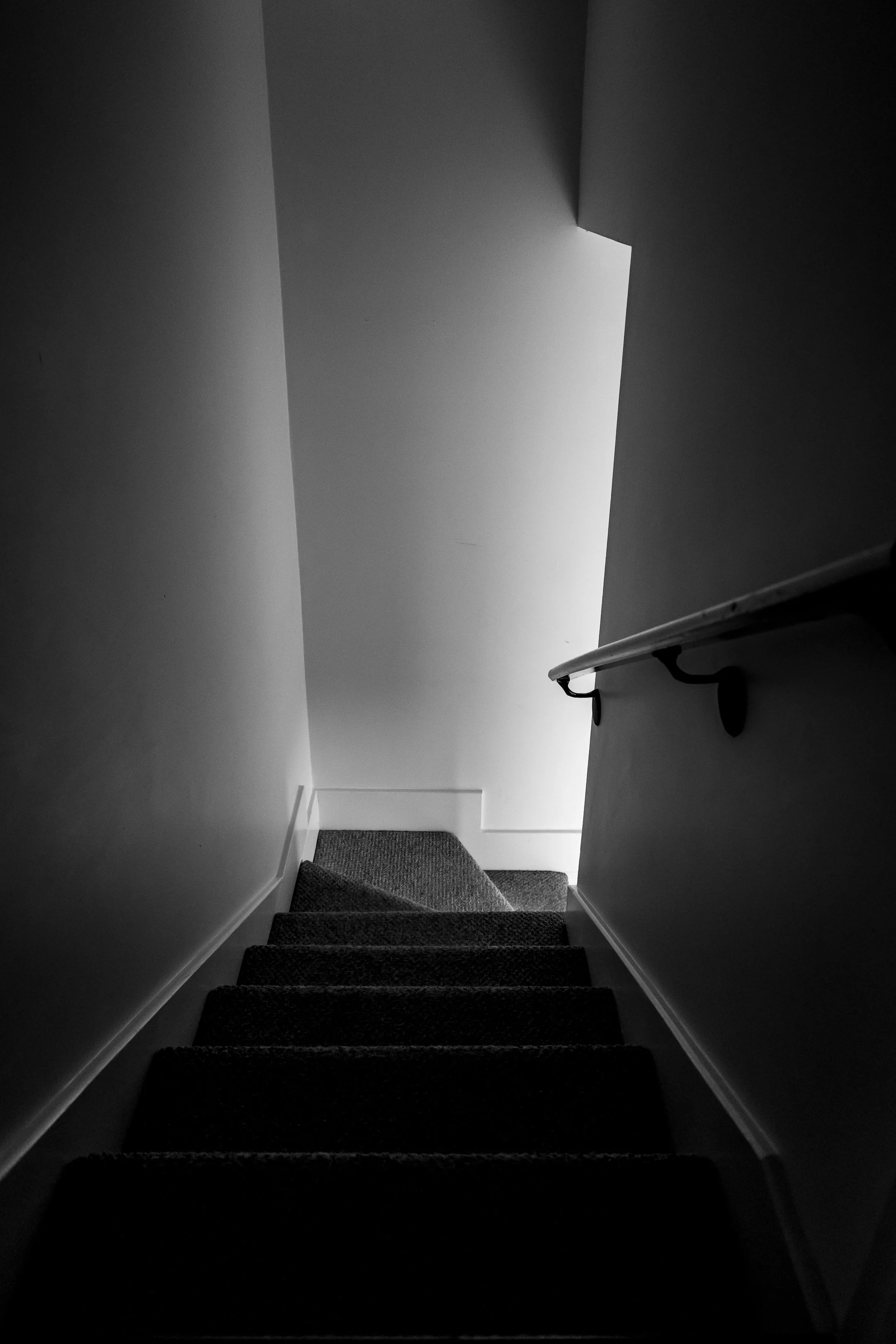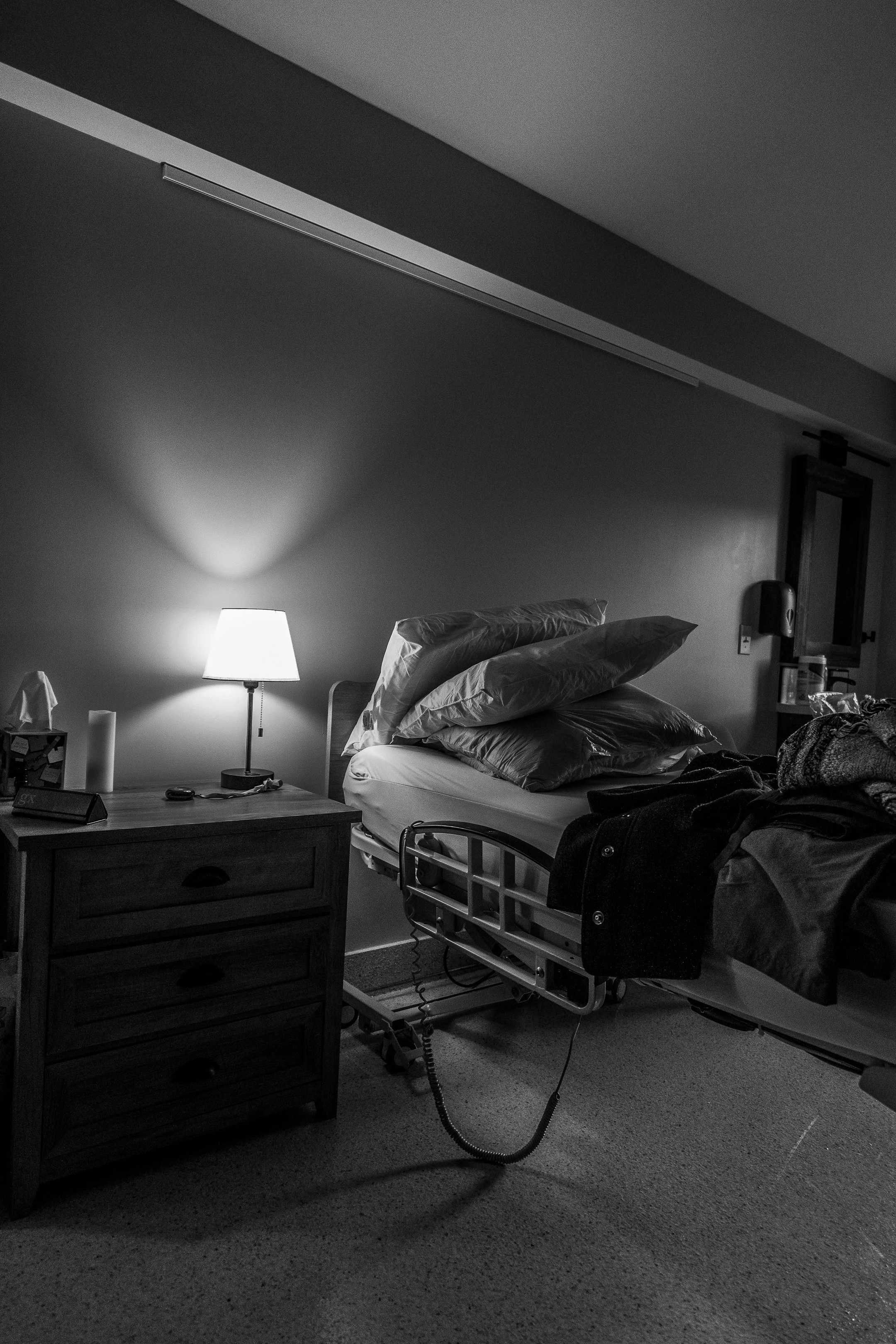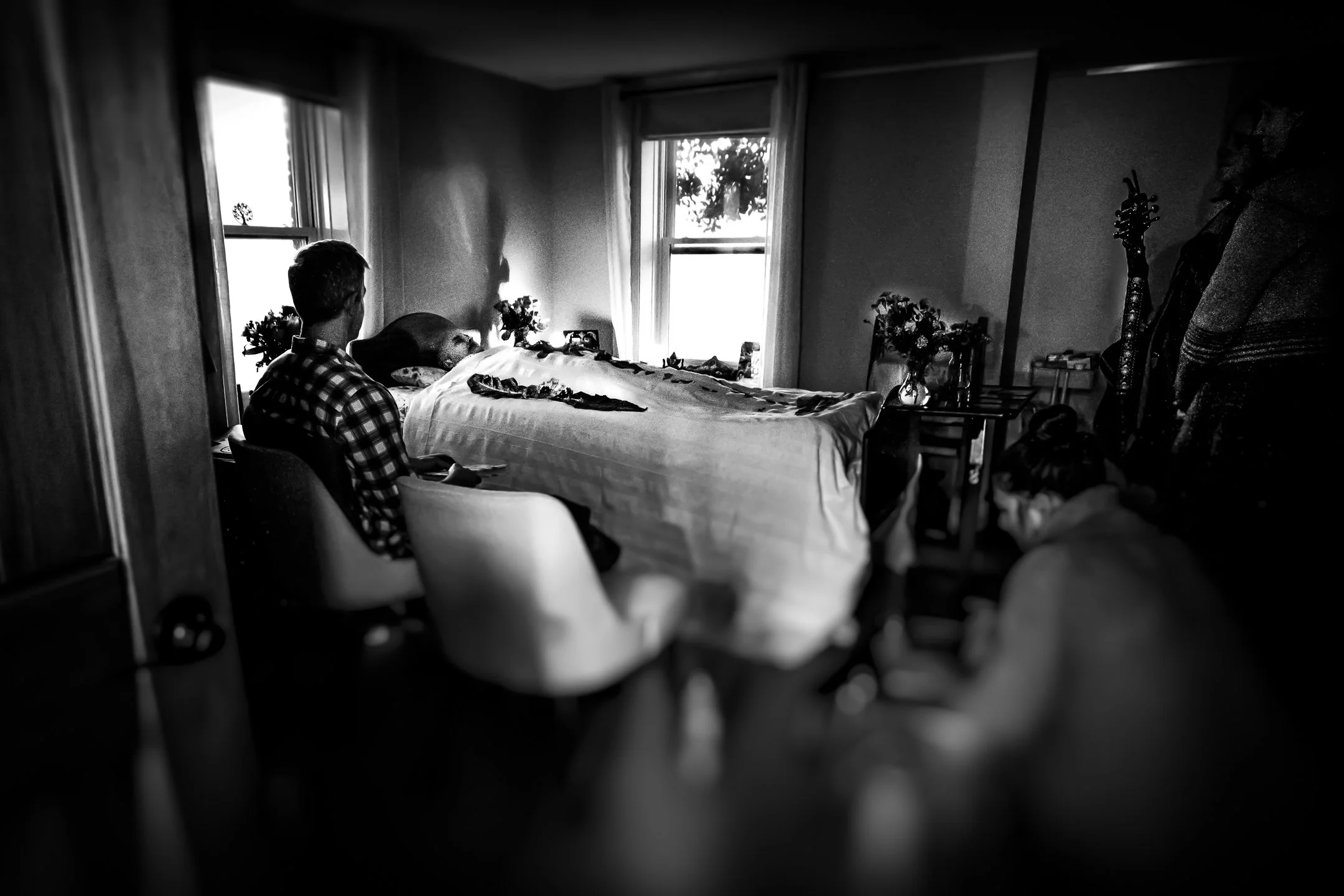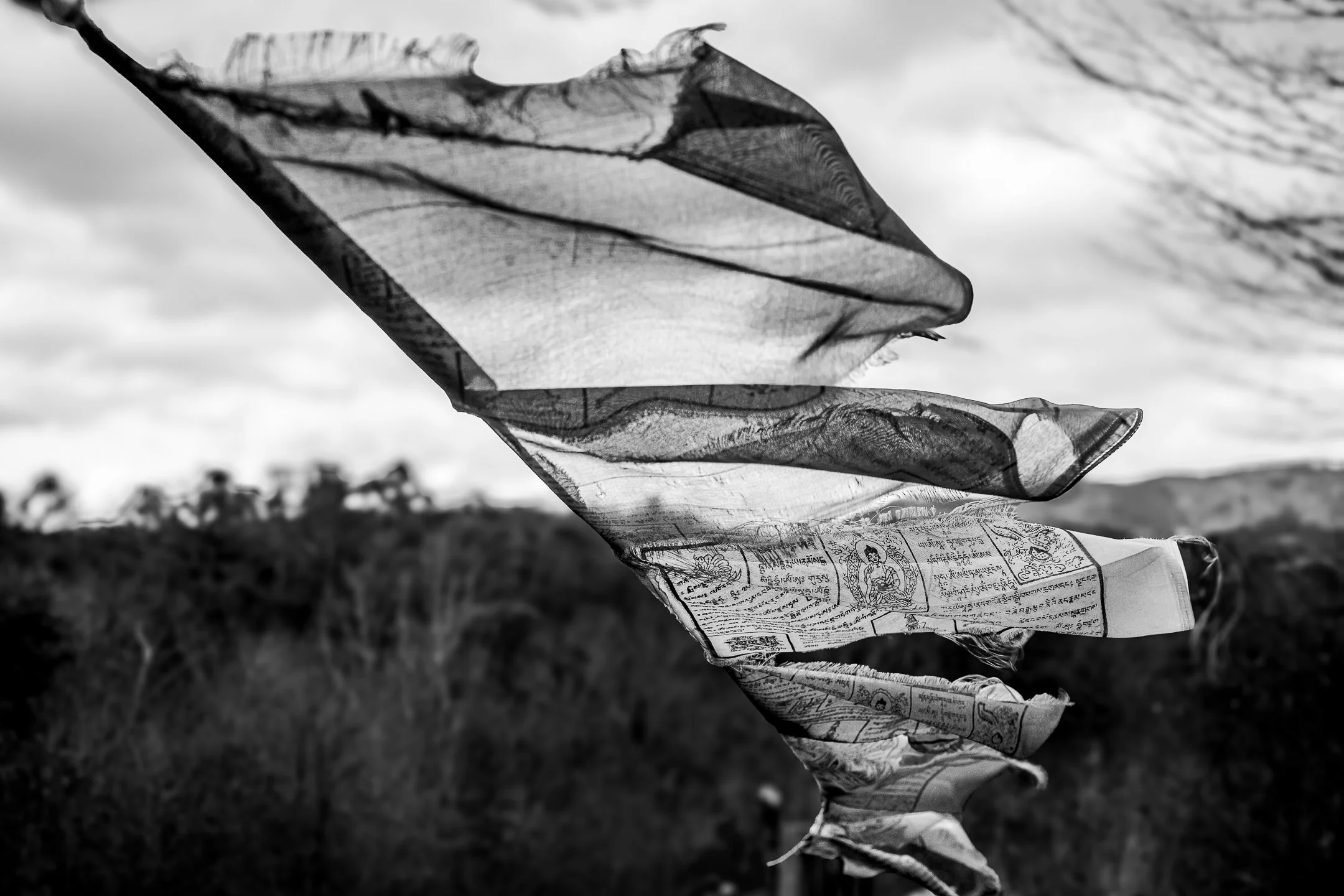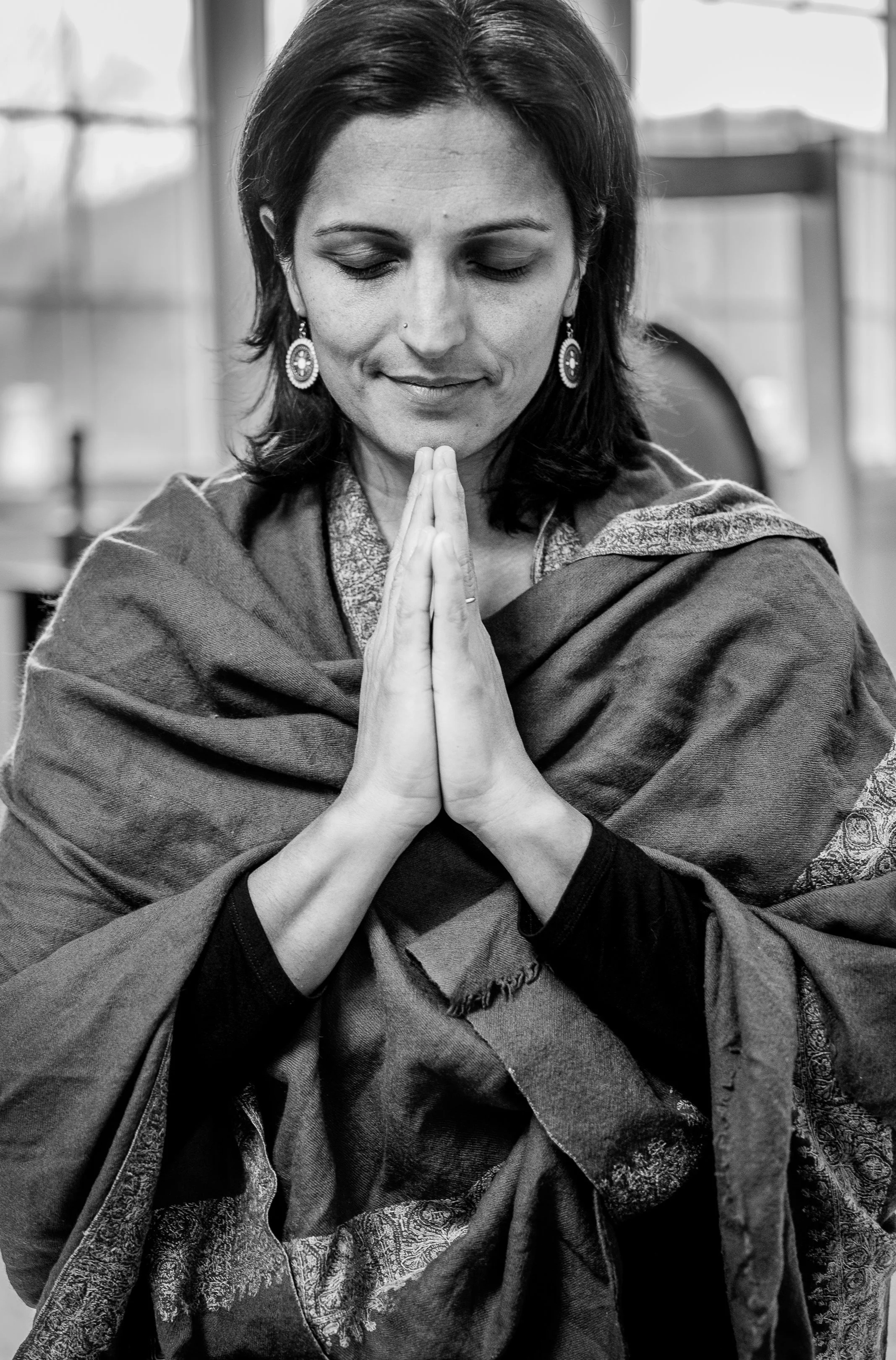Dying to Live: Embracing Mortality as a Gateway to Living With Greater Purpose, Presence, and Authenticity.
Conscious Living and Dying: How Dr. Aditi Sethi is Restoring Sacredness to the End-of-Life Experience.
Aditi Sethi, MD. © Brody Hartman
Dr. Aditi Sethi is a hospice and palliative care physician, end-of-life doula, musician, and founder of the Center for Conscious Living and Dying (CCLD). Featured in the film “The Last Ecstatic Days”, Aditi is reshaping our cultural understanding of dying, death, and bereavement care. Her work centers on embracing mortality as a gateway to living with greater purpose, presence, and authenticity.
CCLD, based in Swannanoa, NC, provides compassionate end-of-life care in a home-like environment, bridging caregiving gaps and complementing traditional hospice services. Beyond direct care, CCLD hosts workshops, training programs, and grief-tending retreats to foster death awareness and intentional living. Its philosophy honors all seasons of life, offering individuals and families the space to meet death with dignity and grace.
I interviewed Aditi for this Portrait of Purpose to explore the journey that led to her groundbreaking work, and my photographs of her and the CCLD campus accompany this story as expressions of her commitment to conscious living and dying.
Attuning to Purpose
For Aditi, music has been a lifelong thread in her journey of attuning to purpose. Born in India, her father nicknamed her Gun Gun, meaning "humming," recognizing the melody that would define her life even then. Her lineage is steeped in music—her paternal grandfather was a singer and harmonium player, and her maternal grandmother sang spiritual songs. “I was playing harmonium for Indian singers by age seven. It required deep listening—a frequency, a resonance energy.”
Aditi describes purpose as “an attunement to what uniquely feeds my soul, that aligns with my being. Not just my ideas of who I am, but, on a visceral level, knowing the knower. Then finding how that aligns with the needs of the world.”
But the journey toward alignment was neither linear nor easy. “Throughout my life, I strayed from that sense of attunement. Life happens—conditioning, fears, doubts, and the weight of expectations as part of an immigrant, first-generation family.” Moving to Georgia, she felt torn between the pressure of striving for the American dream and staying true to herself.
“Attunement, for me, is about deeply listening—not just with your ears but with your whole being—your heart, breath, senses, and even beyond the senses.”
Aditi is an accomplished singer and musician, seen here playing the harmonium. © Brody Hartman
A Lifelong Calling
At 17, Aditi attended a volunteer fair at Davidson College, wandering among the booths until she found herself drawn to the Hospice of Charlotte table. “The woman at the table started explaining their work, saying they cared for people with six months or less to live. Then she said the word death, and it hit me. I thought, Wait—you mean we’re going to die? That moment shifted something deep inside me. For the first time, I felt a sense of alignment—a voice in my body saying, Pay attention. This is for you.”
She began volunteering for hospice, an experience that would profoundly shape her path. “Sitting with people at the end of their lives was transformative. It wasn’t about doing much; you just showed up. That was enough to break open my narrow, myopic view of the world.”
This work introduced her to the profound stillness and presence that exists at the threshold of life and death. “Anyone who’s been present for a natural birth—not an over-medicalized one—or sat at the bedside of someone dying knows what I mean. The veil is thin. It’s always thin, but when that portal is open, the energetics are profound. There are no words for it—it’s a stillness, a presence, a love beyond imagination. But to experience it, you have to get out of the way. If your monkey mind is racing with what you think you should do or what might go wrong, you’ll miss it.”
This depth of presence requires preparation and a willingness to let go of ego. “It’s like what Eastern philosophy teaches about the eternal Self and the ego self—there’s always a push and pull. To truly attune to the sacredness of those moments, we have to cultivate the ability to sit fully in that space, and when we do, it changes how we walk through life. We begin to sense dissonance, to feel when something isn’t in right relationship or alignment.”
At the time, Aditi was grappling with the dissonance of being a first-generation Indian-American, navigating cultural expectations while trying to find her place in the world. “I felt caught between worlds—Indian when I was with Indians and trying to be as American as possible with everyone else. That disconnection showed up in my body as eating disorders and discomfort in my own skin. I wasn’t fully embodied.”
Her hospice work brought her into contact with lives and struggles that felt far removed from her own. “I remember sitting with a man dying of AIDS in affordable housing in Charlotte. It wasn’t about doing much; I just showed up. But that was enough to see how small my world had been—my dorm room, my life, my friends. My perspective was just a fraction of humanity.”
Through these experiences, Aditi began to understand the sacredness of attunement, both at the threshold of life and death and in the everyday moments of living. These early encounters would become the foundation of her calling, introducing her to the deep presence and awareness required to meet life and death fully.
“I remember sitting with a man dying of AIDS in affordable housing in Charlotte. It wasn’t about doing much; I just showed up. But that was enough to see how small my world had been—my dorm room, my life, my friends. My perspective was just a fraction of humanity.”
Origami in The Lighthouse, CCLD’s community gathering space. © Brody Hartman
“Anyone who’s been present for a natural birth—not an over-medicalized one—or sat at the bedside of someone dying knows what I mean. The veil is thin. It’s always thin, but when that portal is open, the energetics are profound. There are no words for it—it’s a stillness, a presence, a love beyond imagination.”
The Dissonance of Loss
Loss has been a profound teacher for Aditi, dismantling layers of identity and ego, forcing her to confront the question: “Who am I now?” She reflects on how major life changes—what she describes as a “shedding of parts of myself”—have shaped her. “This year, the death of my father was huge—not just for me personally, but for our family unit and my experience on the planet. He’s always been my guide.”
Late Autumn tree post-hurricane Helene. © Brody Hartman
Terra, a close friend and sister figure of 26 years, also left an indelible mark. “She was caring for our cat while we were out of town and died on our deck. She was probably out in the elements for three days. Coming home and finding her—it was a profound moment of grief and shock.”
The devastation of a hurricane compounded these experiences, forcing Aditi to confront the fragility of perceived safety. “It was complete annihilation of anything I thought was safe—the illusion of safety in terms of climate change and everything else.”
Each loss, she says, strips away more of what is unnecessary, asking her to reflect deeply. “Who am I now? I’ve always reflected on this question. Who is a football player when they break an arm and can’t play? Who is a pianist who can’t play piano? With all these major life changes, it’s like I’ve just been dismantled. And yet, I feel like I’m emerging more fully—like a lotus flower rising from the muck.”
“On the outside, with my dad’s death and everything that happened, it could look like the most devastating thing. Some might ask - How could you function? How could you love so big? How could you have faith in humanity with all the things? And somehow, I feel like I’m emerging even more fully, like the essence of who I am, which is love, which is connection to nature, to spirit.”
Through these experiences, Aditi has found a new clarity and directness, though she admits she is still in the process of understanding it. “I can’t fully define it, but it’s a clarity I haven’t felt before—a precision and a directness. I feel like I’m stepping into my role more fully.”
Aditi with Grandmother Tree at the CCLD sanctuary. © Brody Hartman
Aditi Sethi © Brody Hartman
Ethan Sisser: A Turning Point
Aditi’s time with Ethan Sisser, a 36 year old young man with terminal brain cancer, was one of the most defining experiences of her career. Ethan had been livestreaming his dying process, hoping to demystify death and help others confront their fears.
As Ethan’s condition worsened, Aditi arranged for his transfer to the CarePartners Solace Center hospice facility where she served as a palliative care doctor. He was hoping to film his dying journey surrounded by loved ones and community at the Solace Center, but corporate resistance posed a roadblock. “I had worked there for 10 years and never asked for anything, but this time, I did. After multiple meetings—legal, risk, marketing—just as Ethan’s ambulance was on its way, the VP said, Absolutely not.”
“The first time I laid eyes on Ethan, I walked into his room wearing my scrubs and stethoscope. He was sitting in bed, leaning over because he was coughing. From the doorway, we locked eyes, and it was just…a knowing. It was a moment of deep recognition, a soul knowing, like an embrace of Divine Love or a warm, comforting maternal presence. That’s what I felt with Ethan. It was a strong knowing that we had something to do together.”
Faced with an impossible choice, Aditi turned to Ethan with complete transparency. “Not granting this dying man his final wish in the way he wanted would have been okay in some sense. Ethan would have had a beautiful death, surrounded by love, and I would have kept my well-paying job. Or, I could get creative, break the rules, and figure out how to make it happen for him. Those were the two options.”
Ethan’s response was unequivocal. “It’s worth every penny I have,” he told her, despite not having much. That clarity was all Aditi needed. “At that point, I told him, Okay, I’ll do everything I can. I didn’t know what that would look like, but as soon as I opened up to the possibility, things began falling into place. It required me to keep attuning in real time—fast, like playing basketball. It was game on.”
“After my experience with Ethan, I realized I couldn’t work within that system anymore. I put in my notice with no plan—just faith that something else would emerge. That’s when the vision for CCLD began to take shape.”
The emotional toll of advocating for Ethan was significant. “That’s why the documentary begins with me crying—those emotions were so raw. But from that moment on, I just started deeply listening, tuning in, and letting things flow. From then until Ethan’s last breath, everything unfolded.”
Despite the challenges, Ethan’s journey illuminated profound truths for Aditi. “Hospice had become about filling beds, meeting quotas, and billing. The sacredness of death was secondary to the business of it.” Witnessing this system’s failures deepened her disillusionment and solidified her resolve to create something new.
“After my experience with Ethan, I realized I couldn’t work within that system anymore. I put in my notice with no plan—just faith that something else would emerge. That’s when the vision for CCLD began to take shape.”
Entrance to Center for Conscious Living and Dying © Brody Hartman
Aditi Sethi © Brody Hartman
Aditi Sethi © Brody Hartman
Leadership, Service, and Community
For Aditi, leadership and service are inseparable from authenticity and attunement. Her work at the Center for Conscious Living and Dying requires her to show up fully—not just as a guide but as a steward of something much larger than herself. “If I don’t do what I’m here to do, CCLD may not unfold the way it’s meant to. I sense that CCLD has a spirit of its own... It’s not coming through me as my vision, and I rarely say, this is my vision. People want to attribute it that way—they want to say, this was the doctor’s vision. But when I talk to others, they often tell me I had the same dream.”
This shared dream requires Aditi to balance community, service, and leadership while staying true to her inner clarity. “If I don’t approach this work authentically and fully, doing what I know I’m meant to do, without falling into my old patterns of pleasing, taking care of people, or compromising my own knowing to support others, then this organism won’t continue to ground. Community naturally involves compromise, yes, but if I keep neglecting my clarity for the sake of others, it won’t take root.”
Leading CCLD has also caused her to confront the distractions and patterns that can pull her away from what matters most. “I’ve started getting distracted—there’s just too much to do when you’re busy, taking on too much, saying yes to everything. If I don’t work on my patterns—wanting to please, wanting to do it all—and I do see the best in everybody, which is part of the challenge, then it won’t happen.”
Aditi reflects on the balance between creating loving, constructive systems and avoiding the reductionism often found in the corporate world. “That’s where managing people comes in, and I’m starting to get clearer. It’s about putting structures in place to offer support and guidance—all those things business savvy people know. But in my mind, those things often feel reduced, like in the corporate world—so dry, void of spirit. Yet there are people like you, I’m sure, and others highlighted in a book like The Healing Organization who know how to approach this differently. It’s about asking questions, being open to learning, but also infusing systems and structures with love.”
Ultimately, Aditi knows the key to leading this work lies in cultivating stillness and listening. “What’s mine to do now is to create solitude and stillness in my day so I can attune to my inner instrument. But there are so many demands—so many perceived reasons not to.”
Through this balance of vision, authenticity, and attunement, Aditi strives to lead CCLD as both a community and a living organism, one that is rooted in shared purpose and sustained by deep listening.
Aditi Sethi © Brody Hartman
Coda: Matt’s Vigil
After our session, I wanted to take a few more photos of the CCLD campus, including one of an empty hospice suite. I reached out to Aditi, who was on her way to the Sanctuary. She was very accommodating and mentioned empty suites downstairs, inviting me to wander and photograph them. She also shared that Matt, a CCLD resident, had crossed the previous day—the same day as our story session.
I arrived before Aditi and let soul guide my steps and my camera. To my surprise, I heard harmonium music and singing as I entered the lower foyer near the suites. Walking toward one of the empty suites, I noticed a door slightly ajar. Inside the dimly lit room, with little LED lights casting a soft glow, people were gathered around a bed, singing and holding vigil. I felt like I had stumbled into a sacred private moment, so I stepped back outside to wait for Aditi to arrive.
Meanwhile, the Light House community center next door was alive with activity. Guests were quickly arriving for what turned out to be a surprise 70th birthday party for a beloved elder of the community. The contrast was striking—the jubilant "surprise!" echoing from the hall and the sacred vigil unfolding in the lower level of the Sanctuary house. Both moments felt celebratory in their way, honoring different seasons of life.
When Aditi arrived, she showed me to an empty suite to photograph. Then, to my surprise, she invited me into the room to honor Matt's crossing. I hesitated to bring my camera. Its mechanical, cold nature felt jarring amidst the grace and solemnity of the room. Leaving my camera outside the door, I joined the ceremony, sitting quietly with Matt's friends and family as music and song filled the space.
I've always been fascinated by the process of death and dying—and by our cultural aversion to it. My spiritual studies and experiences point to the survival of consciousness after death, and I've read countless stories and studies about near-death experiences. It's intuitive to me that how we live shapes how we die. If we avoid life's pain and suffering, neglect our wounds, or leave relationships untended, those unresolved threads resurface in our final moments. I've heard many stories of what mythologist Michael Meade calls a "breach death," where people exit the world wrestling with old ghosts and regrets—missed opportunities to love, unspoken truths, reparations left undone, and years lost worrying over the trivial.
As I sat with Matt—a fellow traveler on this planet but a "stranger" in the conventional sense—I thought of my father-in-law. The last time I was in the room with someone who crossed was six years ago, and it was with him. I remembered placing my hands on his body, now lifeless, and how starkly his cold, solid form contrasted with the vibrant presence he had in life. It was such a gift to kiss his forehead and feel the finality of his being in this form. But in that moment with Matt, I felt my father-in-law's spirit present in the room.
Aditi sat cross-legged on the floor in front of a harmonium, joining three other women in chants and sacred songs. The moment was holy—familiar, surreal, poignant, and enlivening. It's a reminder of my own season's passing. The veil Aditi had spoken of was indeed thin—no clear distinction between living and dying—just presence.
When Aditi finished playing, she whispered to me that the family was okay with me taking a photo. I froze. What? I was not prepared for this. My camera felt like a blunt, clumsy instrument in this liminal space where music and song were so tenderly holding the hearts of the community.
The room was nearly dark, lit only by the gentle glow of the LED lights, and I didn't have the right lens for the moment. I whispered to myself, May this be of service. I'll do the best I can. I timidly took one image from the doorway, then stepped into the room and pressed the shutter once more. It was a profound threshold for me to cross—to "take" a picture of someone whose soul was now liberated from their body.
The image is perfectly imperfect. It is what it is—a sacred moment that continues to reverberate through me. I am deeply grateful to Matt's friends and family for granting permission to take and share this photo and to Aditi for inviting me into this holy space to honor a life and a crossing.
Fire tenders inside the tent holding round-the-clock vigil for hospice patient Matt. I was surprised (and not) to see the rainbow ray of light when I brought the image into the digital darkroom. © Brody Hartman
Bells and ribbons attached to the stakes of the fire tenders’ tent. © Brody Hartman
Community prayer ribbons. © Brody Hartman
Stairs leading to the hospice suites. © Brody Hartman
An empty hospice suite. © Brody Hartman
Permission granted by Matt's family and CCLD to share this image..
Prayer flags flying at the Center for Conscious Living sanctuary. © Brody Hartman
Explore More
Center for Conscious Living and Dying: https://www.ccld.community
Aditi’s Music: https://aditimusic.com
The Last Ecstatic Day Movie: https://www.thelastecstaticdaysmovie.com
Explore More Portraits of Purpose
Aditi Sethi © Brody Hartman

